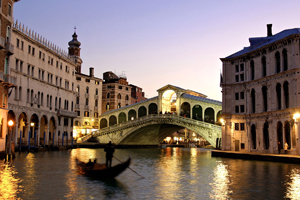Head of Reliance Industries, India's most valuable company, was placed 19th on a list headed by Mexican tycoon Carlos Slim. (Source: Forbes ‘The World’s Billionaire’s List, March 2012)
Mukesh Ambani retained the top spot among Indians on Forbes' annual list of the world's billionaires released in March this year, with a net worth of $22.3bn. (Source: Forbes ‘The World’s Billionaire’s List, March 2012)
The head of Reliance Industries, India's most valuable company, was placed 19th on a list headed by Mexican tycoon Carlos Slim (pictured). 'Mukesh Ambani is the world's richest Indian, despite losing $4.7bn in the past year,' Forbes said. (Source: Forbes ‘The World’s Billionaire’s List, March 2012)
Lakshmi Mittal (No.21) was listed as the biggest loser, with Forbes saying Mittal lost $10.4bn, falling to a net worth of $20.7bn and out of the world's top 10 for the first time since 2004. Mittal was placed 21st on the list. The drop came after shares in his company ArcelorMittal, the world's largest steelmaker, fell due to surging costs and soft demand in Europe. (Source: Forbes ‘The World’s Billionaire’s List, March 2012)
Billionaire brothers Shashi and Ravi Ruia (No.133), who control Essar Group, suffered the second largest loss this year, losing $8.8bin on the year and placed 133 on the list with a net worth of $7bn. (Source: Forbes ‘The World’s Billionaire’s List, March 2012)
Azim Premji, chairman of Wipro, was ranked 41 with a net worth of $15.9bn. Savitri Jindal, head of Jindal Steel and Power Ltd, was India's richest woman, 80th on the list with a net worth of $10.9bn. (Source: Forbes ‘The World’s Billionaire’s List, March 2012)
Sunil Mittal (No.113), Kumar Birla (No.116), Anil Ambani (No.118) and Dilip Shanghvi (No.124) were among the 48 Indians on the Forbes list. (Source: Forbes ‘The World’s Billionaire’s List, March 2012)
Carlos Slim retained his position atop the list with an estimated worth of $69bn, while his Mexican rival Ricardo Salinas Pliego enjoyed the largest increase in wealth. Fifty-eight countries were represented on the list of a record 1,226 billionaires whose average fortune was $3.7bn. (Source: Forbes ‘The World’s Billionaire’s List, March 2012)
No.1: Carlos Slim Helu & family
$69bn
Age: 72
Industry/ Company: Telecom
Country: Mexico
(Source: Forbes ‘The World’s Billionaire’s List, March 2012)
No.2: Bill Gates
$61bn
Age: 56
Industry/ Company: Microsoft
Country: United States
(Source: Forbes ‘The World’s Billionaire’s List, March 2012)
No.3: Warren Buffett
$44bn
Age: 81
Industry/ Company: Berkshire Hathaway
Country: United States
(Source: Forbes ‘The World’s Billionaire’s List, March 2012)
No.4: Bernard Arnault
$41bn
Age: 63
Industry/ Company: LVMH
Country: France
(Source: Forbes ‘The World’s Billionaire’s List, March 2012)
No.5: Amancio Ortega
$37.5bn
Age: 75
Industry/ Company: Zara
Country: Spain
(Source: Forbes ‘The World’s Billionaire’s List, March 2012)
No.6: Larry Ellison
$36bn
Age: 67
Industry/ Company: Oracle
Country: United States
(Source: Forbes ‘The World’s Billionaire’s List, March 2012)
No.7: Eike Batista
$30bn
Age: 55
Industry/ Company: mining, oil
Country: Brazil
(Source: Forbes ‘The World’s Billionaire’s List, March 2012)
No.8: Stefan Persson
$26bn
Age: 64
Industry/ Company: H&M
Country: Sweden
(Source: Forbes ‘The World’s Billionaire’s List, March 2012)
No.9: Li Ka-shing
$25.5bn
Age: 83
Industry/ Company: diversified
Country: Hong Kong
(Source: Forbes ‘The World’s Billionaire’s List, March 2012)
No.10: Karl Albrecht
$25.4bn
Age: 92
Industry/ Company: Aldi
Country: Germany
Also view: Meet Carlos Slim: the world’s richest man
(Source: Forbes ‘The World’s Billionaire’s List, March 2012)


















































.jpg)

















